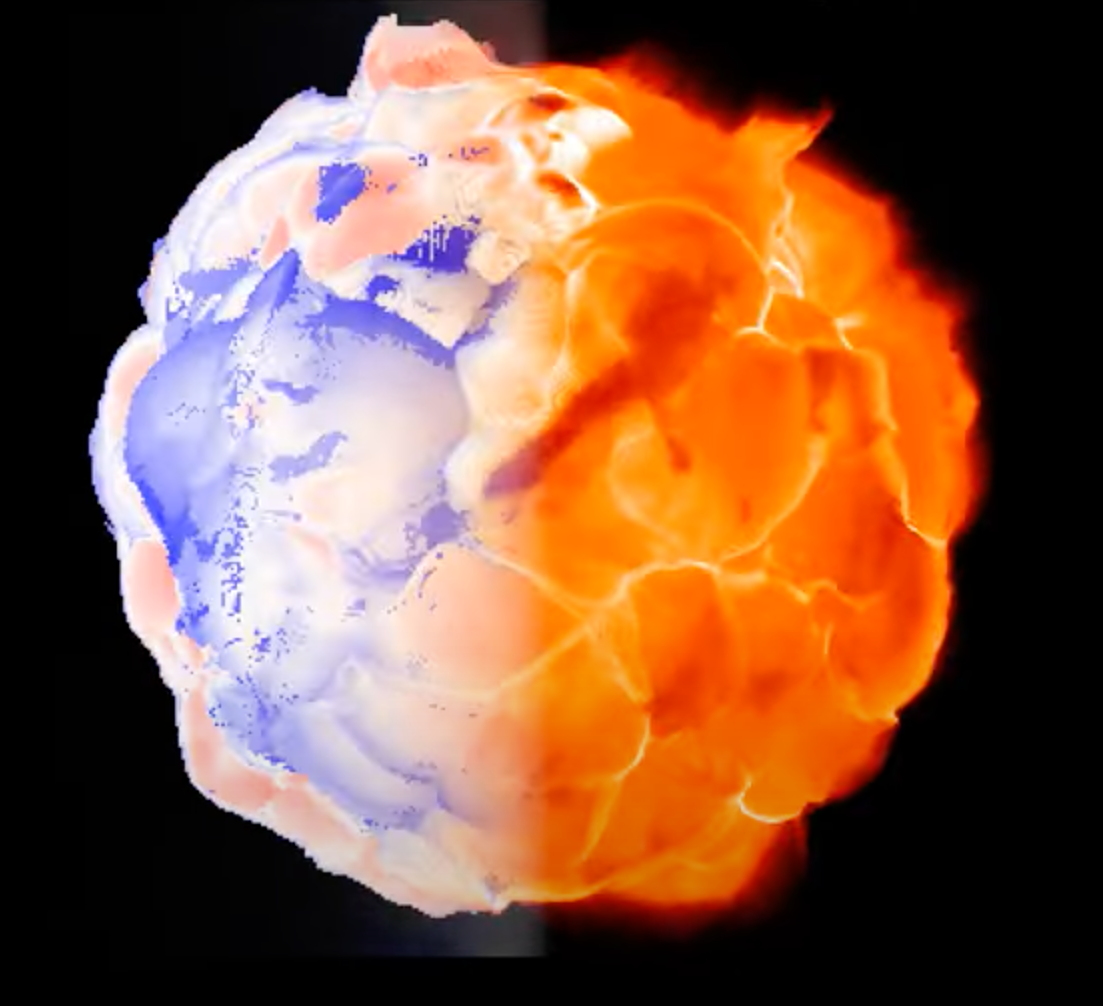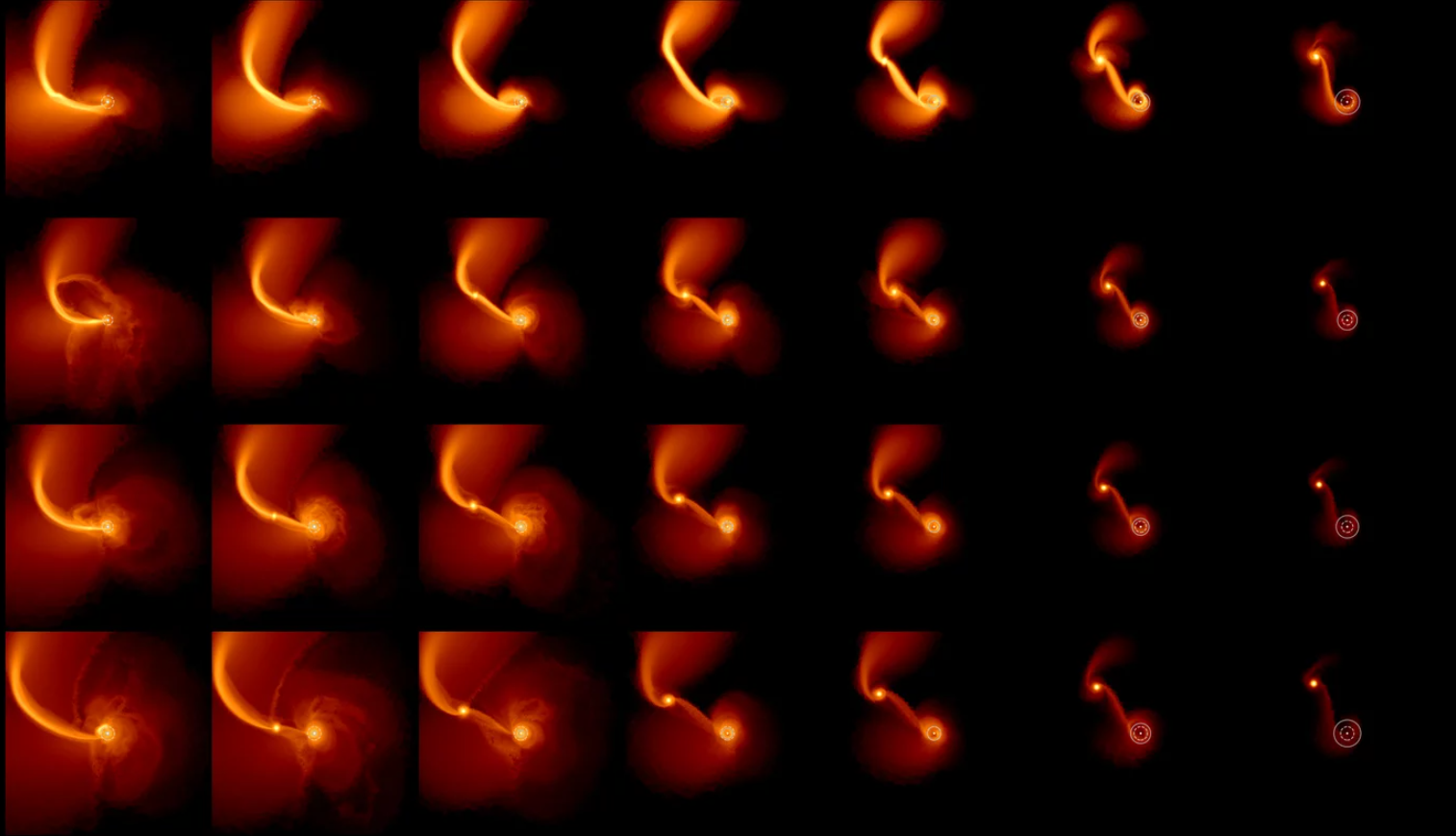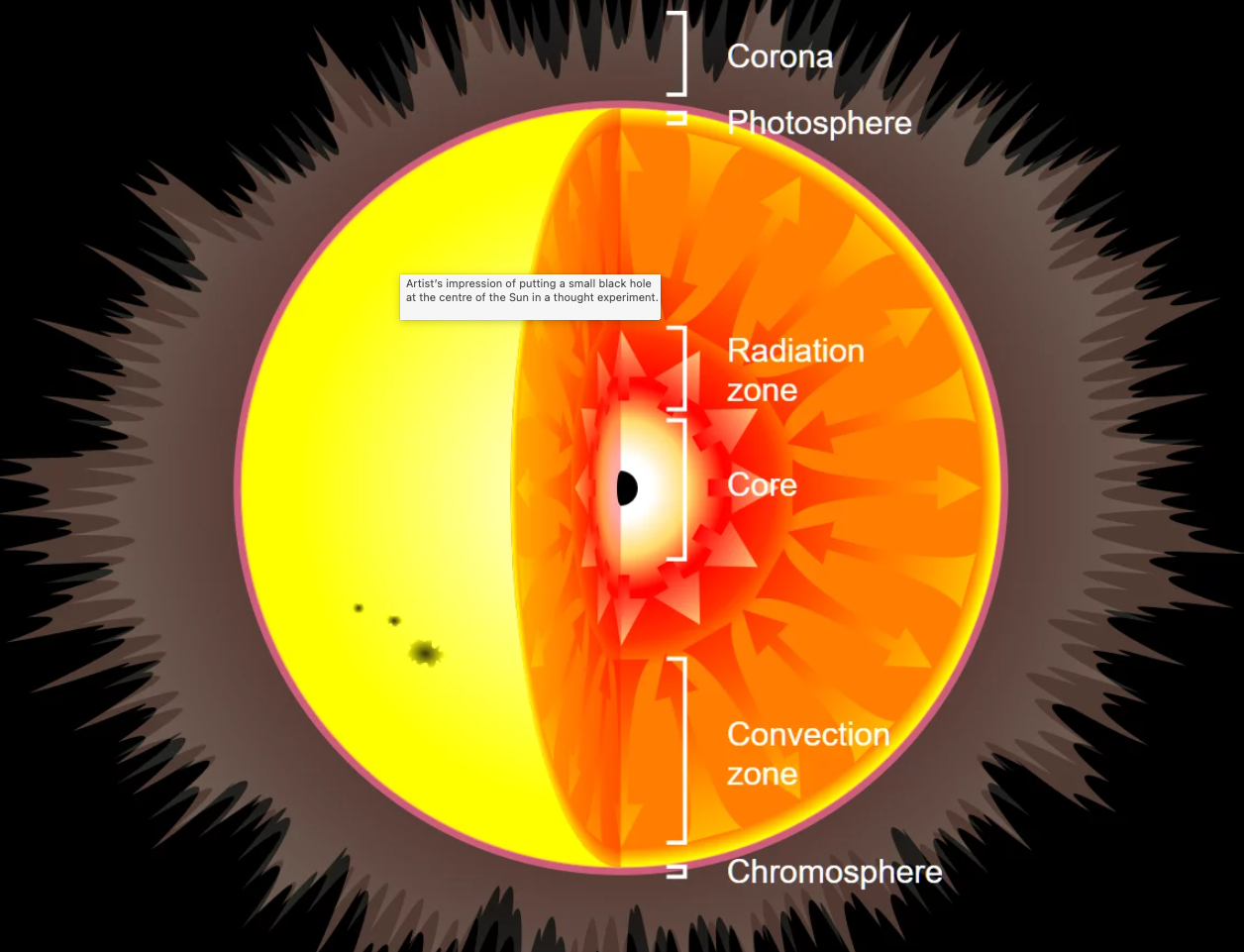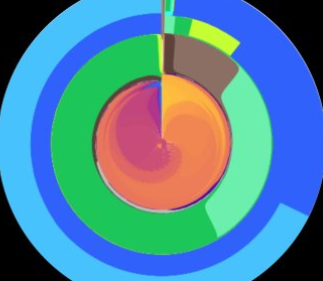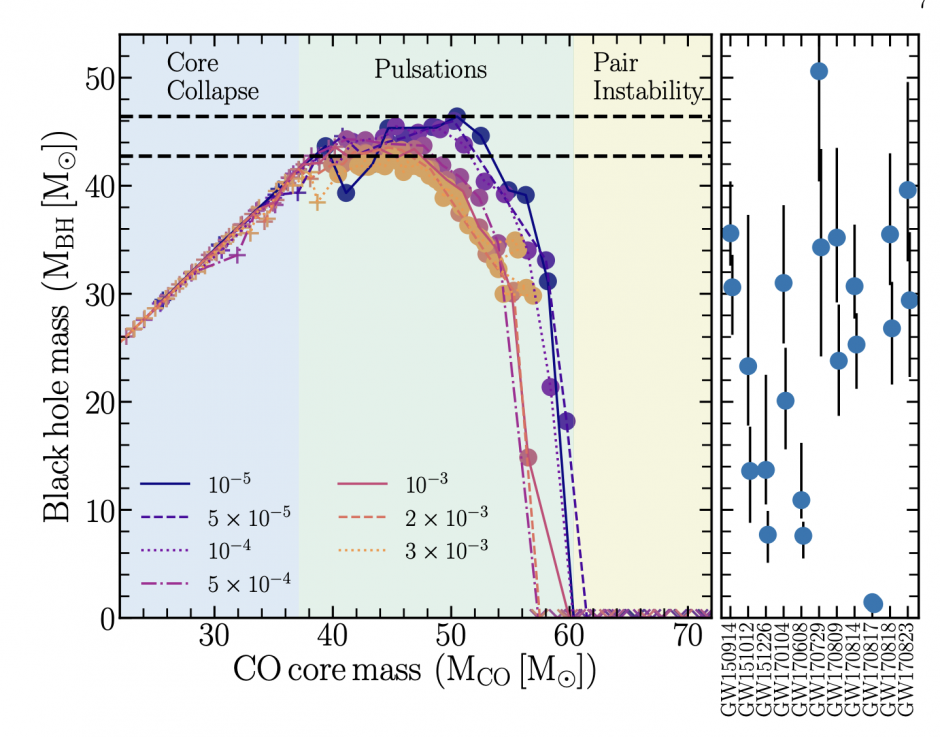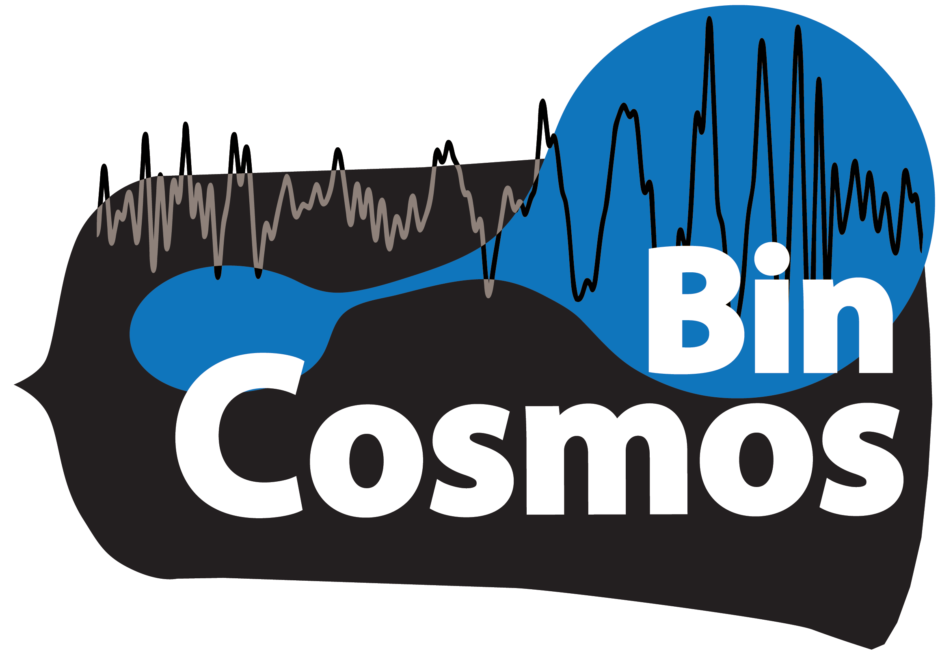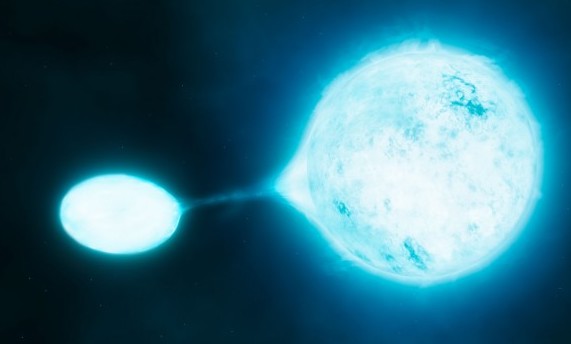News
In our new paper PhD student Jing-Ze Ma (马竟泽) questions the claim that the Red Supergiant […]
In dense stellar environments, interactions between stars and stellar-mass black holes should occur frequently. Through hydrodynamical […]
In a hypothetical scenario, small, primordial black holes could be captured by newly forming stars. An […]
Throwing one star into another into another star does not bode well for either star. However, […]
Starting January 1st, 2021, I will be starting a new stellar department in Garching near Munich […]
Eva Laplace (final year PhD student at University of Amsterdam ) has been awarded the KNMW/ET […]
Group member Stephen Justham coauthored this new textbook “Common Envelope Evolution. Without question this is the […]
Stars are cosmic factories that produce most elements heavier than helium in their deep interiors through […]
The theory of (single) stellar evolution predicts that stars can end their lives as Black holes, […]
Group member Tom Wagg has been awarded the Leo Goldberg prize by the Harvard Astronomy Department […]
Gravitational-wave (GW) detections are now starting to probe the mass distribution of stellar-mass black holes (BHs). […]
Time for an update with all new faces of our cross Atlantic group. In (crimson) red […]
Manos Zapartas is a very recent BinCosmos PhD graduate, who only left our group a few […]
Anticipating new gravitational wave detections of heavy binary black holes, Pablo Marchant (CIERA) together with Bincosmos […]
Mathieu Renzo’s investigation of what is probably the most massive runaway star currently known. Using Gaia […]
Ylva Götberg’s second paper on the spectra of the stripped stars stripped is now accepted, featuring […]
Abel Schootemeijer‘s MSc thesis paper got accepted, co-supervised by Ylva Götberg and @Manos Zapartas. Abel investigated the binary […]
Published in Science 05 Jan 2018, “The number of stars that form at each mass is known as […]
Guinness World Records 2017 book included massive overcontact binary VFTS 352 that was found in Tarantula […]
Ylva’ Götberg’s paper has been accepted for publication in the journal Astronomy and Astrophysics. Find a […]
All stars lose mass, in part in the form of a stellar wind. (Even our sun […]
Left-to-right: Kelly Gourdji, Felicia Krauss, Laura Driessen, Marcella Wijngaarden, Louise Edstam, Selma de Mink, Anne Archibald […]
Natalie Wolchover’s, writer at Quanta Magazine, covered the discussion going on among astrophysicist debating the origin […]
Dr. Silvia Toonen has been awarded the prestigious postdoctoral VENI fellowship, awarded by the Dutch Science […]
Excerpt of the draft of a promotion video for the national supercomputer center at Science Park, […]
When to black holes in a binary merge, the ripples can in principle be observed with […]
Core-collapse supernovae (SNe) are among the most powerful explosions in the Universe. They mark the deaths of […]
Thorne and Zytkow and others hypothesised that, when a neutron star sinks inside another star, a stable […]
Using ESO’s Very Large Telescope, an international team of astronomers have found the hottest and […]
De Mink & Belcynski, (2015, accepted for publication in ApJ) With the advanced Gravitational Wave detectors […]
Dorottya Szecsi’s new paper presents an extensive grid of models of massive stars for the galaxy with […]
Early B-type stars, are the little brothers of the brighter, hotter and more massive O type stars, which […]
Data of Westerlund 2 were obtained from the HST proposal 13038: A. Nota (ESA/STScI), E. Sabbi […]
Fabian Schneider (former PhD student in Bonn, now postdoctoral fellow in Oxford) simulated the evolution of […]
Blue super giants are stars that are too bright and too big. Stellar models predict that […]
Growing evidence for the existence of very massive stars (up to 500 Solar Masses) motivated the […]
I am heading to Amsterdam as a University Lecturer and MacGillabry Fellow to start a new […]
Incidence of mergers and other products among a typical population of massive stars. A merger between […]
Seventy percent of all O-stars is expected to interact with a binary companion during it’s life. […]
Stellar models suggest that rotation can have drastic impact on the evolution of massive stars, but […]
The Hubble Tarantula Treasury Project (HTTP), an ongoing multi color imaging survey lead by Elena Sabbi […]
Why do stars rotate the way they do? Nature or Nurture? Is their rotation rate set […]
We report the detection of a strong, organized magnetic field in the secondary component of the […]
New paper Accepted for publication in A&A available on ArXiv. (Sana, de Koter, de Mink et […]
Astronomers have discovered two clusters full of very bright stars on the verge of merging. The […]
A new study using ESO’s Very Large Telescope (VLT) has shown that most very bright high-mass […]
Several million stars are vying for attention in this NASA/ESA Hubble Space Telescope image of a […]
In this astrometric program we use the unique capabilities of the Hubble Space Telescope to measure […]
Bob Hirshon from the AAAS science society discusses the discovery of the fastest spinning star in […]
The VLT-FLAMES Tarantula Survey I: Introduction and observational overview C. J. Evans (UKATC), W. D. Taylor, […]
Binary progenitor models of type IIb supernovae J.S.W. Claeys, S.E. de Mink, O.R. Pols, J.J. Eldridge, […]
Rotating Massive Main-Sequence Stars II: Simulating a Population of LMC early B-type Stars as a Test […]
Rotating Massive Main-Sequence Stars I: Grids of Evolutionary Models and Isochrones Ines Brott, Selma E. de […]


